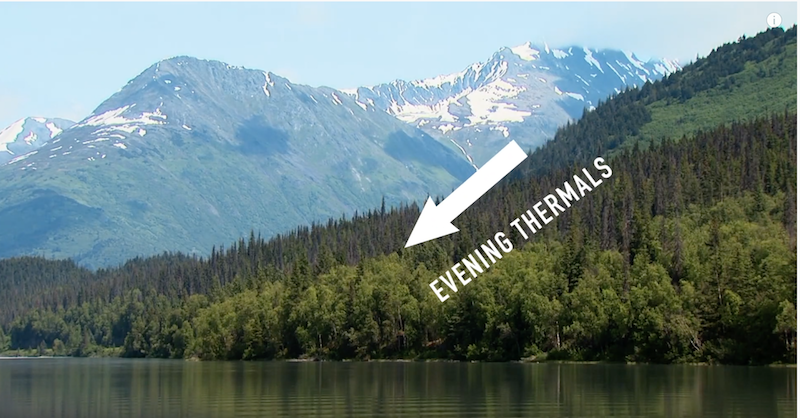Have you ever caught a whiff of something delicious while walking around town? Wind currents carried that scent from its source to your nose. If you headed into the wind, you could have followed the smell to a restaurant or possibly a backyard grill.
Deer, likewise, use their nose to find food, communicate and detect danger. They create a powerful defense shield by using wind and breezes in conjunction with their extraordinary nose.

Deer use their Jacobson’s organ to enhance their sense of smell. Photo Credit: QDMA
How powerful is the deer’s sense of smell? Scientific estimates vary wildly, but a deer’s nose likely has anywhere from 800 to 10s of thousands times more scent receptors than a human’s nose. But that’s not all. The roof of a deer’s mouth contains the Jacobson’s organ, which further sorts out smells. As a deer breathes, it automatically detects airborne odors, including human scent. Also, a large portion of a deer’s brain is devoted to deciphering those smells.
Given their high-powered nose, it doesn’t take much for deer to smell where you are and where you’ve been. Despite the deer’s keen olfactory senses, we can defeat their nose by staying downwind of them.
Use the wind to your advantage by choosing stands and blinds based on wind direction. You want the wind to blow your scent away from wherever you expect deer to approach. It’s ideal to set up downwind of the deer trail, but a crosswind setup is also excellent.
You can check the wind direction by firing up your favorite weather app before entering the woods. Weather forecasts can change, of course, so double-check the wind when you arrive at your hunting property and again at your hunting site.

You can use a weather app to check the wind or use a handheld spray in the field. Photo Credit: ATA
Always carry simple wind indicators. They’re usually plastic squeeze bottles filled with white, lightweight powders you puff into the air. Watch the powder to see which direction it blows. These devices are especially helpful for detecting subtle thermal currents, so check the wind regularly.
If you hunt hilly or mountainous areas, you know thermals play a huge role in carrying airborne scents. Air warms in morning sunlight and rises. As evening approaches, air cools and flows downhill. If you bowhunt near the bottom of a hill in the morning, your scent will flow downhill initially, but then flow uphill on rising thermals as air temperatures rise.

Pay attention to thermals when there’s no wind. Photo Credit: ATA
Pay constant attention to thermals on days with little or no wind because thermals are the only vehicle to carry your scent. Thermals can hamper careless hunters, but seasoned hunters use thermals to hunt areas they typically won’t enter because of swirling, constantly changing winds.
Defeating the deer’s strongest sense is all part of bowhunting’s fun and challenge. By managing scents and paying attention to the wind, you’ll escape detection more often and increase your success.